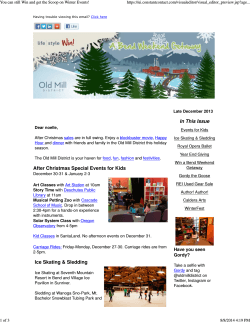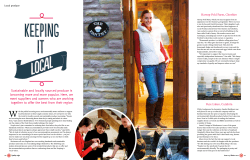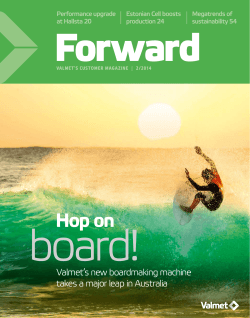
How to find us Mill Shop arts and heritage centre eShop
Whitehaven Laura Rosenzweig Mill Shop How to find us Lake District National Park Egremont You can buy a broad range of craft and locally made products in our Mill Shop. A685 J38 A6 A683 A591 Coniston hat and scarves Angela Bradley Lake Windermere farfield mill A5284 Kendal A684 J37 Oxenholme A5092 Sedbergh M6 A590 A590 Cowgill J36 A65 A590 We are situated on the A684 Garsdale/Hawes Road just one mile east of Sedbergh where there is ample free parking.A65 By car, leave the M6 at Junction 37 and drive 5 miles through the A689 stunning Howgills landscapeA683 to Sedbergh from where Farfield Mill Morecambe is signposted. Lancaster A683 Farfield Mill is within 20 mins drive of: Kendal, Kirkby Lonsdale, Kirkby Stephen 40 mins drive of: Hawes, Penrith, Lancaster, Ingleton, Windermere 60 mins drive of: Leyburn, Skipton, Carlisle, Ambleside Mary Taylor Helene Shovlar Helene Shovlar Weaving Annie Hudson The Mill is the home to two magnificent working Dobcross Power Looms, often seen in action as our weaver produces rugs, throws and travel rugs exclusive to Farfield. We can also weave to commission (for small yardages). It’s a rare experience to see these looms working in the United Kingdom. An early Whitney Loom is also on display. Weavers using hand and floor looms are frequently at work and are usually happy to talk to visitors and answer questions. Farfield Mill blanket Farfield Mill blanket Farfield Mill blanket Laura Rosenzweig Farfield Mill is situated just one mile east of England’s Book Town, Sedbergh which is well worth a visit for its treasure chest of book shops. www.sedbergh.org.uk/booktown winter/spring 2008 5 miles from M6 J37 open daily 10.00 – 17.00 Kirkby Lonsdale Ulverston The Tearoom at Farfield Mill is a subtle blend of traditional country tearoom and licensed restaurant with contemporary style. Dent A683 Millom Barrow-in-Furness A684 Garsdale A595 Tea Room arts and heritage centre sedbergh, cumbria Tebay Windermere A595 Our excellent range of products are now available online in our eShop. The eShop offers the same quality and variety as you will find at the Mill, find out more at www.farfieldmill.org Kirkby Stephen M6 A591 Ambleside eShop A66 Train stations Oxenholme Station 12 miles Garsdale Station 6 miles Kirkby Stephen 11 miles Dent Station 13 miles www.farfieldmill.org weaving crafts artists studios tearoom exhibitions heritage Access We aim to be as accessible as possible, our facilities include: disabled parking spaces, level access toilets, lift to all floors, guide dogs and hearing dogs are welcome. Laura Rosenzweig If you have any further access needs, please call 01539 21958 or see a member of staff on arrival. Adults £3 Concession £2.75 Children FREE Last admission 4.30pm Coaches are always welcome but please book in advance. Registered Charity number 1026293 Exhibitions in the Howgill Gallery 9th February—9th March 3rd May—29th June Same Difference Mechanical Drawing Brian Pike and Ed Kluz The Schiffli Project Farfield hosts a number of open studio workspaces and the Farfield Artists who occupy these can often be seen making and creating in their studios. You can buy work from our artists and they are often happy to talk with visitors. Details of all of the artists can be found on the website: www.farfieldmill.org. As well as our resident artists there are galleries containing work for sale from makers and craftspeople from around the region and further afield. Demonstrations are given throughout the year, and you can regularly see rug makers, weavers and embroiderers at work. Pots by Rebecca Callis Farfield Mill is now a member of Arts Council’s Own Art, interest free loans designed to make it easy and affordable for everyone to buy original, high quality contemporary art. Laura Rosenzweig Explore the history of the Mill from 1837 to the present day. The exhibition centres around the Farfield Mill of 1911 with explanations of processes involved in textile production, from shearing the raw fleece to the finished cloth. The Mill was eventually restored by the Sedbergh and District Buildings Preservation Trust in the 1990s. Brian Pike Ed Kluz Mary Taylor Heritage Farfield Artists Brian Pike and Ed Kluz are two North Yorkshire artists whose shared fascination with early art has led them in different and sometimes surprising directions. Both artists work with themes of identity, change and transformation. Ed’s work is rooted in our Medieval heritage. He seeks out the lost, forgotten and overlooked. Brian’s work is also about transformation, but focuses on the individual. His paintings are populated by a cast of simple, naive little characters that could almost have stepped out of a crude 16th century woodcut. Both have a fresh and unique approach to colour, form and the quirkiness of life. 15th March—27th April Shanties Philippa Troutman A touring exhibition originated by the School of Design, Manchester Metropolitan University featuring: Rowena Ardern, Jill Boyes, Nigel Cheney, Isabel Dibden Wright, Stephen Dixon, Nina Edge, Kate Egan, Rozanne Hawksley, Alice Kettle, Jane McKeating, Melanie Miller, Susan Platt, Sally Morfill, Lynn Setterington and Alison Welsh. The Schiffli Project documents and explores textile practice and the creative process through the responses of a range of practitioners to the UK’s last working Schiffli machine, held at Manchester Metropolitan University. Rebecca Callis Angela Bradley Farfield Mill, Garsdale Road, Sedbergh, Cumbria, LA10 5LW. 015396 21958 info@farfieldmill.org www.farfieldmill.org Philippa lives in a railway house on the site of the former Shanty towns of Ribblehead and her stunning prints, etchings and drawings ensure that the hundreds of men, women and children who contributed to the making of the Settle-Carlisle railway will not be forgotten. This beautiful exhibition combines the best of contemporary printmaking by Philippa and exquisite bookbinding by Esther Primrose with a well researched testimony to the makers of the Ribblehead Viaduct. The Schiffli is a unique, one-hundred year old multi-needle embroidery machine capable of mechanically stitching repeat patterns or images across a two-metre wide piece of cloth. The stitched designs are created by moving a pantograph by hand. Such machines were traditionally used to mass-produce commercial embroidery. This exhibition brings together some of the leading contemporary textile artists today and each has approached the machine in a very individual way, bringing something of their own practice to the machine and challenging the usual pre-conceptions of commercial embroidery.
© Copyright 2025













